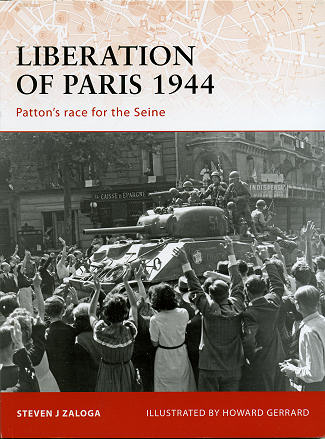 Generally
speaking, capital cities are not major objectives of warfare. Sure, you could
say that they are the seat of government, and if an aggressor takes the capital,
then it takes over the power base. But governments are people and those people
often have the common sense to flee the capital before it is captured. Rarely do
these cities have any real military reason to be taken. However, despite not
having a military objective (like a port city, for instance), there is often a
psychological reason for capturing them.
Generally
speaking, capital cities are not major objectives of warfare. Sure, you could
say that they are the seat of government, and if an aggressor takes the capital,
then it takes over the power base. But governments are people and those people
often have the common sense to flee the capital before it is captured. Rarely do
these cities have any real military reason to be taken. However, despite not
having a military objective (like a port city, for instance), there is often a
psychological reason for capturing them.
On the reverse side of the coin, rarely
is there any reason for a liberator to free a capital city from the invaders. At
least, not right away. Often times these cities are full of citizens who have
endured years of hardship and liberating them will require the army that does so
to leave a lot of troops behind to maintain order. Not only that, but the
supplies needed to keep the citizens fed are those that cannot be used for the
army to further push out the invaders.
This is pretty much the way it was
regarding Paris in 1944. The Germans were on the run and had little in the way
of occupying forces in the city itself, as any real combat troops were pulled
out to face the Allied onslaught. American generals Eisenhower and Bradley did
not want to send supplies needed for troops to civilians and so had made plans
to bypass the city.
However, in warfare, things don't always
turn out as planned. The French had a strong voice in Charles DeGaulle and
though he was not well liked by most of his Allied partners, he was very much a
patriot and wanted to see his capital city freed of Germans. It also helped that
the commander of German troops in Paris realized that when the war was over,
France and Germany would have to deal with each other, and so constantly
resisted orders from Hitler to 'turn the city into smoking rubble'.
Then there was the French resistance
movement. This was actually a number of splintered groups that included a large
number of communists, and it was imperative to DeGaulle that these people not
gain the upper hand in determining post war politics. These groups knew that the
Allies were near and were determined to oust the Germans.
So we had a mix of forces working towards
liberation of the city in one of those quirks of warfare that in the end,
created a great deal of good will between the French and the American Army. The
French under LeClerc were the first to enter the city and with the backing of
the US and the work of the resistance, were able to oust the Germans with little
loss of life. Thanks to the German commander, the city was spared the ravages of
others that were liberated, such as befell Warsaw.
Author Steven J. Zaloga covers the
subject with his usual thoroughness and in a style that in eminently readable.
In line with other books in the Campaign series, there is an introduction that
provides the strategic situation at the time, then a look at opposing
commanders, plans and forces. Then he goes into the details of the campaign,
which covers the majority of the book. Then the aftermath and what can be seen
of the battleground today.
All of this is superbly illustrated not
only by the artwork of Howard Gerrard, but also by the selection of period
photographs.
This all makes a superb book on the
subject. One that I found most enjoyable and I know you will as well.
It is a superb book on the subject and one that all students
of American history should have in their libraries. I can
recommend to you without reservation.
May 2008
For more on the complete line of Osprey books,
visit www.ospreypublishing.com. In the US, it is
Osprey Direct at 44-02 23rd St, Suite 219, Long Island City, NY 11101., where you can
get a catalogue of available books.
If you would like your product reviewed fairly and quickly by a
site that has nearly 400,000 visitors a month, please contact
me or see other details in the Note to
Contributors.
 Generally
speaking, capital cities are not major objectives of warfare. Sure, you could
say that they are the seat of government, and if an aggressor takes the capital,
then it takes over the power base. But governments are people and those people
often have the common sense to flee the capital before it is captured. Rarely do
these cities have any real military reason to be taken. However, despite not
having a military objective (like a port city, for instance), there is often a
psychological reason for capturing them.
Generally
speaking, capital cities are not major objectives of warfare. Sure, you could
say that they are the seat of government, and if an aggressor takes the capital,
then it takes over the power base. But governments are people and those people
often have the common sense to flee the capital before it is captured. Rarely do
these cities have any real military reason to be taken. However, despite not
having a military objective (like a port city, for instance), there is often a
psychological reason for capturing them.